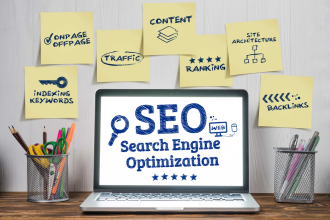Whether you are setting up a new lab or upgrading an existing one, making informed purchasing decisions is critical. As scientific technology continues to advance, the options available can often be overwhelming. This article examines critical factors to take into account when purchasing equipment for a modern research laboratory.
Understanding Your Lab’s Needs
Assessing the specific needs of your laboratory should be the first step in any purchasing decision. Consult with your researchers to understand their requirements for projects and experiments. This process will help you tailor your purchases to align with ongoing research initiatives, thereby maximizing resource allocation. It’s important to take inventory of the current equipment and identify gaps that need to be filled. Create a detailed list of necessary instruments and amenities, from basic tools like pipettes to more complex machinery.
Prioritizing these needs can prevent overspending on less critical items while ensuring that vital functions are covered. Staying updated on the latest technology can help you make informed choices. Investing in a Homogeneous time-resolved fluorescence plate reader can enhance the accuracy and efficiency of specific experiments. Such equipment offers significant advantages over traditional methods, increasing throughput and reliability. When evaluating these options, it’s wise to take into account long-term maintenance and calibration requirements. Factoring in service contracts and technical support can save your laboratory from unexpected downtime.
Budget planning should strike a balance between immediate needs and future scalability, ensuring that your lab can grow with its research goals. Collaboration with suppliers may provide opportunities for customized solutions that better fit your workflow. Aligning purchases with both present demands and future aspirations can help establish a well-equipped and sustainable laboratory environment.
Budget Considerations
Basing your buying decisions on budgetary constraints will prevent overspending and help you allocate funds wisely. Create a detailed budget that includes all anticipated costs, from individual pieces of equipment to maintenance and service agreements. Remember that cheaper options may result in higher long-term costs due to maintenance, repair, or reliability issues.
Like any investment, think about both short-term and long-term implications. While an initial lower cost may seem appealing, it could lead to further expenses down the road if the equipment does not meet your lab’s standards or throughput needs. Aim for high-quality instruments that deliver reliable performance for years.
Research and Reviews
With technology rapidly evolving, keeping up with advancements and product reliability is imperative. Utilize online resources such as scientific journals, product reviews, and consumer feedback to gauge the performance of various instruments. Vendor websites and dedicated technology forums can offer insights into the advantages and disadvantages of specific equipment.
Utilizing recommendations from other laboratories or professionals can be beneficial. Reach out to colleagues in your field to discuss their experiences with various equipment and suppliers. A good source of unbiased feedback is often invaluable when making decisions that impact research outcomes. Acquiring instruments that have proven effective in similar environments can save time, resources, and prevent potential mistakes.
Supplier Relationships
Building a solid relationship with suppliers enhances your procurement strategy. Engage in dialogue and communicate your laboratory’s needs clearly to potential suppliers. This process can lead to better pricing, more flexible terms, and improved service levels. Before making a purchase, inquire about warranties, service agreements, and training options that accompany specific products.
Negotiating favorable terms can add significant value over the lifetime of the equipment. Ensure your suppliers provide adequate support for installation and calibrating new instruments, as well as access to customer service for ongoing inquiries.
Training and Compliance
Purchasing advanced equipment necessitates appropriate training for the personnel who will utilize it. Without proper training, even the best equipment can underperform or lead to errors in research outcomes. Take into account the available training options and whether your team is equipped to operate new systems effectively. Ensure compliance with industry standards and regulations.
This aspect is particularly vital when it comes to safety protocols and laboratory practices. Familiarity with regulatory requirements will simplify the procurement process and make it easier to maintain compliance once the equipment is operational. Investing time and resources into training ensures that your lab personnel can maximize the value of the equipment purchased, preventing costly mistakes and safeguarding research integrity.
Future-Proofing Your Lab
When making buying decisions, think about how your selections will impact the laboratory’s future. Emphasizing scalability and flexibility in equipment will allow for extended use as research needs evolve. Opt for modular systems that can integrate new components or software updates without requiring the wholesale replacement of existing equipment. Another aspect to weigh is the versatility of the instruments.
Choosing universal platforms may provide solutions for various applications, reducing the need for multiple dedicated devices. This strategy can optimize space utilization and provide financial efficiency. Investing in tools that accommodate future technological developments or regulatory shifts will instill confidence that your lab can adapt effectively.
Enhancing your laboratory’s ability to pivot when necessary ensures continued progress amid changing scientific landscapes. In summary, smart buying decisions in a modern research laboratory hinge on a clear understanding of needs, budget considerations, supplier relationships, adequate training, and future planning. Balancing these aspects can lead to successful procurement that enhances productivity and research outcomes.













